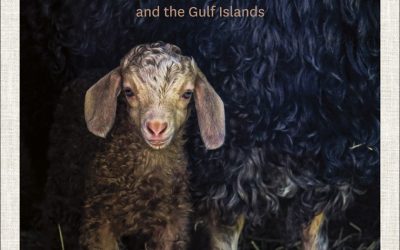The Textile Museum of Canada (TMC) describes itself as “the only museum in Canada dedicated to exploring the human experience through textiles,” making it highly intriguing to fibre and textile lovers of all kinds. Whether you are interested in weaving, beadwork, rug hooking, knitting, quilting, historical pieces or contemporary artwork, you will find something here to fascinate you.
The museum, located at 55 Centre Street in Toronto, Ontario, is forty-five years old. Originally called The Canadian Museum of Carpets and Textiles, it shortened its name and moved to its present location in 1989.
The building can be tricky to find, situated on a small side street not far from one of the main squares in the city, housing City Hall. The site was the location of both sweat-shop manufacturing and substandard housing for workers until the first half of the twentieth century. The museum’s façade gives no indication that behind its unassuming glass door can be found a wealth of textile treasures. It occupies about 24,000 square feet of space over four floors, and welcomes over 30,000 visitors in a normal year.
At the time of writing, however, the museum is closed to the public due to COVID-19 restrictions. So let’s take a virtual tour.
Visiting The Museum
As you enter the vestibule in normal times, you are warmly greeted by one of the wonderful volunteers who work there as part of a 140+ strong team of fibre enthusiasts who donate their time (over 20,000 combined hours in 2019) to enable the museum to run on a relatively small budget. Entry ticket prices are around $15, or free for members (memberships start as $35 per year).
Before ascending to one of the two floors of exhibition space, you are asked to stash any bulky bags in cubbies at reception. There is also an area for hanging coats on the first floor. This allows each visitor to feel comfortable during their visit and of course protects the exhibits from accidental damage. There are both stairs and an elevator to take you up to the fun stuff.
When you arrive at the exhibition space, a series of open concept rooms of differing sizes that meander their way in a circular route, you will find it light and airy, barrier-free. Most pieces are displayed hanging, gallery-style, which means that you can get up close and personal to each of them (no touching of course). A few glass cases house smaller pieces. There are no windows, as light is so damaging to textiles, so illumination is from motion-activated lighting. It can be disconcerting if you linger over a piece too long if you are there when it is quiet, and the lights go out!
There are two floors of gallery space which allows for pieces to be displayed from the museum’s own collection, and from traveling or specially curated shows.
Education & Additional Resources
On the second floor is a space for educational pursuits, with hands-on interactive exhibits, encouraging you to try out weaving, braiding and other techniques, or simply learn about fibres. These displays are designed to appeal to the younger set, especially school groups (around seventy of which visit each year), as well as curious textile fans.
This area is sometimes used for holding one of the almost fifty hands-on “Textile Teach-ins” workshops that take place each year. These classes cover a variety of topics and are often offered in tandem with a current exhibition.
Just off this area is a library, housing books and periodicals which are available for research. In 2018/19 the library welcomed over 600 visitors and responded to more than sixty research questions.
On the upper floors there is a sixty-seat auditorium for multiple uses; this is where I held my book launches. The offices for the small team of fewer than fifteen curators and administrators can also be found here.
Before you leave be sure to pop into the gift shop, also on the second floor. Like the museum, it is small but mighty, stocked with all manner of textile-related merchandise from around the world, including books covering a wide spectrum of textile topics, one-of-a-kind pieces made by Canadian makers, and gifts for young fibre lovers. Sales from the shop are very important to the museum, contributing approximately 14% of its operating revenue. As with other operating procedures the gift shop has been taken on-line and can be found here.
“Cross Currents – Canada in the Making” [June 2018- March 2019] Exhibition curated by Roxane Shaughnessy.
“Colour Improvisations 2 – An International Exhibitions of Contemporary Quilts [May 2018- Sept 2018] Curated by Nancy Crow.
“Colour Improvisations 2 – An International Exhibitions of Contemporary Quilts [May 2018- Sept 2018]
“Colour Improvisations 2 – An International Exhibitions of Contemporary Quilts [May 2018- Sept 2018]
“Artistry in Silk – The Kimono of Itchiku Kubota” [Feb 2018- May 2018] Curated by Jacqueline Marx Atkins.
Exhibitions
TMC offers changing exhibitions, with artifacts drawn from its own collection of over 15,000 objects, plus specialized curated exhibitions that are offered only for a limited time. Exhibitions are wide-ranging, exploring many differing textile techniques, in-depth looks at specific cultural approaches, sometimes highlighting a single artist, or covering discussions of fibre-related topics. The pieces and exhibits feature many Canadian-made pieces or artists but also come from international sources—over 200 regions throughout the world—and pieces can be contemporary or up to 2,000 years old.
In 2018/19, TMC exhibited 160 works of art from thirty-three artists. Since 1989 there have been over 120 specially curated exhibitions covering all manner of textile techniques and highlighting a diverse set of cultural topics. Let me tell you about some personal favourites.
Taking the opportunity to connect with attendees outside of the world of textiles, this exhibition was presented in celebration of the 90th Anniversary of Japan-Canada diplomatic relations.
It featured forty-one kimonos designed and produced by the Japanese artist Itchiku Kubota over three decades, from 1976 to his death in 2003. In these pieces he was seeking to bring new life to a centuries-old technique, “tsujigahana,” that was once thought lost forever. Drawing from the traditional combination of resist-dyeing techniques and ink-drawing, the artist expanded into contemporary surface design to create pieces that in the words of the curator, “stimulated the mind and delighted the eye.”
Other Events
TMC runs an outreach program through the Toronto Public Library system. Through this, they host textile workshops, such as fabric printing, or loan objects to educate and animate cultural celebrations like Black History Month or Asian Heritage Month.
In 2019, the 20th annual fundraiser “More Than Just a Yardage Sale” was held.
This event is run entirely by TMC volunteers and relies on generous donations of fabrics, notions, yarn, patterns, beads, buttons and books from the public. It is the highlight of local craft enthusiasts’ calendars for the bargains and much sort-after items that can be found there.
Vision for the Future: Virtual Museum & Response to Pandemic
Prior to 2020 the TMC boasted an online engagement of 34,545 social media followers across various platforms. They were already mindful of reaching textile and fibre fans who weren’t able to physically visit the museum, having already digitized their entire collection of over 15,000 objects. Originally devised to address the problem of only being able to display a small percentage of its collection, this has now become a cornerstone of the virtual access that they offer.
You can browse the TMC collection here.
These high- resolution photos of the artifacts are organized in curated groups of: Featured Textiles, Ceremonial Cloths, Textile from South East Asia, Hats, Tea Cosies & Woven Textiles. While searching you can save the ones that most interest you in your own “collection,” which you can then download or share.
During the pandemic, the TMC developed a digital app to allow access to the planned exhibition “Printed Textiles from Kinnagait Studios”. There is also a YouTube video tour of the exhibition, and Inuvialuit textile artist and jeweler Brye Robertson has given us a detailed virtual tour of the exhibition, with her perspective and commentary on the exhibits.
There is also additional virtual programming offered in support of the closed exhibitions, and even a workshop on knitting from your stash to address the “stay-at-home” situation.
The Textile Museum of Canada’s reach is growing as it takes advantage of the expanding virtual world. Although some of its collection pieces are thousands of years old, the museum clearly demonstrates its commitment to the future of textiles.
It may be small museum, but TMC’s programming and exhibitions are important and engaging, providing amusement and enlightenment to a wide variety of fibre devotees. If you are passionate about any kind of textile you will have a great time at this museum.
Photo credits Fiona Ellis.
Digits & Threads Is a Member-Supported Independent Online Magazine
The articles, tutorials and patterns we publish about Canadian fibre and textile arts, crafts and industry are made possible by our members.














